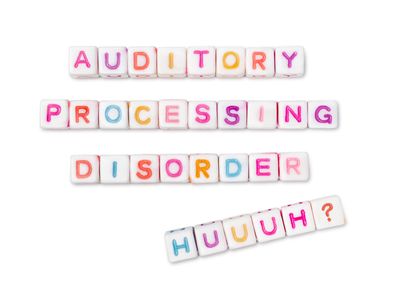Auditory Processing Disorder

Supporting Students with Auditory Processing Disorder (APD)
Students with Auditory Processing Disorder (APD) face challenges in processing auditory information despite having normal hearing. They may struggle with understanding spoken language, distinguishing similar sounds, or following verbal instructions in noisy environments. Like any other students, those with APD have diverse needs and strengths.
When considering how to support a student with APD, ask the following:
What level of individualized support will this child need?
- Collaborate with parents, teachers, and specialists to assess the student’s specific needs and create an Individualized Education Plan (IEP) or 504 Plan if necessary.
- Provide accommodations such as seating near the teacher, assistive technology (e.g., FM systems), or additional time for tasks requiring auditory comprehension.
What challenges does the student face with auditory processing?
Auditory Discrimination:
- Difficulty distinguishing between similar sounds (e.g., “cat” vs. “cap”).
- Use visual aids, written instructions, and phonics reinforcement to clarify sounds and words.
Auditory Figure-Ground Discrimination:
- Struggles to filter out background noise and focus on important auditory information.
- Minimize classroom noise, use carpets or curtains to reduce echoes, and allow headphones for focus.
Auditory Memory:
- Difficulty remembering verbal instructions or sequences.
- Break tasks into smaller steps, provide written checklists, and allow repetition of instructions.
Auditory Sequencing:
- Challenges understanding the order of sounds or instructions (e.g., hearing "843" but recalling it as "348").
- Use visual schedules, numbered instructions, and reinforcement with non-verbal cues.
How will the classroom environment support the student?
- Seating: Position the student near the teacher and away from noise sources like doors or windows.
- Acoustics: Improve classroom acoustics with soft furnishings, soundproofing, or white noise machines to reduce distractions.
- Visual Support: Use visuals such as charts, diagrams, or videos to reinforce spoken information.
What strategies will help with communication?
- Simplify Language Use clear, concise language and repeat or rephrase as needed.
- Check Understanding: Ask students to repeat back instructions to confirm comprehension.
- Written Support: Pair verbal instructions with written or visual cues.
Does the student require support with social skills?
- Students with APD may miss subtle cues in conversations, leading to misunderstandings or difficulty maintaining peer relationships.
- Offer social skills training or mentorship programs to help the student navigate conversations and build friendships.
Are parents and teachers prepared for frequent and open communication?
- Regularly update parents on their child’s progress and collaborate on strategies that work both at home and school.
- Share insights about what classroom interventions are most effective and solicit feedback on what works at home.
How can faith and values support the student?
- Emphasize patience, compassion, and respect in the school community. Encourage peers to be supportive and understanding of students with APD.
- Create inclusive opportunities for all students to engage fully in religious activities, ensuring prayers and instructions are accessible through written and visual supports.
Are staff equipped with training on auditory processing challenges?
- Provide professional development opportunities focused on understanding APD, using inclusive strategies, and adapting teaching methods.
- Encourage educators to explore how APD intersects with other learning needs and how to integrate effective accommodations.
Accommodations and Resources
Instructional Accommodations:
- Provide written instructions and notes to accompany verbal explanations.
- Use FM systems or sound field systems to amplify the teacher’s voice.
- Allow the use of noise-canceling headphones during independent work.
- Slow down speech, pause frequently, and check for understanding.
- Provide visual schedules and picture supports.
- Use captioned videos and transcripts for multimedia content.
Assessment Accommodations:
- Provide extra time for processing questions and responses.
- Use oral presentations sparingly and allow alternative formats for demonstrating understanding.
- Offer tests in quiet environments with minimal background noise.
Materials with Links:
- Phonak Roger System (FM hearing system for classrooms)
- Oticon EduMic (hearing support system)
- Soundfield Systems by Lightspeed
Trainings
1. American Speech-Language-Hearing Association (ASHA)
- Offers webinars and resources for educators on auditory processing and communication strategies.
2. Understood.org
- Free training on supporting students with APD and related learning challenges. - https://www.understood.org
3. SpeechPathology.com
- Online courses covering auditory processing strategies and interventions. - https://www.speechpathology.com
Books and Articles
1. "When the Brain Can’t Hear: Unraveling the Mystery of Auditory Processing Disorder" by Teri James Bellis
- Explains APD and provides practical strategies for managing its challenges.
2. "The Sound of Hope: Recognizing, Coping with, and Treating Your Child’s Auditory Processing Disorder" by Lois Kam Heymann
- A comprehensive guide for parents and teachers to understand and support students with APD.
3. "Building Success with Auditory Processing Disorders: Strategies for Parents and Teachers" by Gail Richard
- Focuses on practical strategies for helping students with APD succeed in school.
4. "Auditory Processing Disorder: A Guide for Educators and Parents" by Dorothy Amirault and Joan Peake
- Offers insights into the characteristics of APD and effective teaching strategies.
5. "Helping Children with Auditory Processing Disorders" by Patricia McAleer Hamaguchi
- Provides tools and activities to assist students in overcoming auditory challenges.
This website uses cookies.
We use cookies to analyze website traffic and optimize your website experience. By accepting our use of cookies, your data will be aggregated with all other user data.